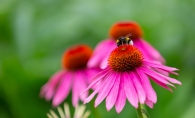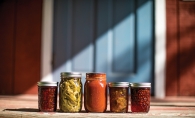Deanne Lange grows 160 hostas, 101 different varieties of daylilies, and 171 types of perennials in her Maple Grove backyard. As you pass through the back gate, it’s hard to believe that so many plants can fit in such a compact space, but Lange has a unique way of making them all flow together into a relaxing patch of earth that exudes a “come hither” vibe. The colors are fantastical. Miniature blooms emerge in the shade of entirely different, larger plants. The eye rests on one grouping just long enough to take in its lush beauty before being drawn to a vine that scales a nearby stump, which holds a container overflowing with blooms. The visual interest never stops.
You’d never guess that it all started with a sloping yard full of evergreens. Over the years, Lange used the shady spots for hostas and created sunny spots for other perennials. She installed hard-scaping, a 2300-gallon koi pond, water plants and boulders of all sizes. The far side of the yard is reserved for vegetables, but non-edibles are in abundance throughout the front and back yards.
Lange’s plantings capture interest along paths, in quiet corners, over a bridge and along the edges of a pond teeming with colorful fish. She tucks spreading plants in the nooks and crannies of driftwood to produce a natural look. In fact, her gardener’s hand is only evident in that there couldn’t possibly be this much variety and color in a similar square footage in nature. Her goal is to make everything look natural, and you can feel the soothing lines of texture and color naturally wash over you as you sit in one of the resting places built into her garden space.
Award-winning Maple Grove photographer Tracy Walsh was kind enough to photograph Lange’s creation for this month’s issue. She gives us an inside look at what it’s like to capture the perfect bloom.

“The waterfall is the focal point on this image, leaving the other elements to become secondary in focus and attention. A garden can pull you in many directions and it’s important to have a spot for your eyes. The brightest part of an image also tends to be one of the first places we look. With this image we see the waterfall area with the rock, then our eye travels the rock border of the pond to pause at the patio in the top left, finally leaving the color and textures in the foreground. I can almost hear the water trickling!”
“We want our images to look pretty, but we also need to gain information in an article while at the same time documenting the space. This image does a good job of showing the structure of the bridge and patio area in an artful way. The flowers in the foreground add a pop of color and interest, keeping your eye from leaving at the end of the bridge. With the flowers in the foreground, you also get the sense of not just seeing the garden from afar but actually being in it. I often ask the gardener where they feel is the best view. This was shot from Deanne’s balcony off the house, which she recommended seeing. It’s a great idea to view the garden from all perspectives. Soon gardens will be shot with a drone camera from above and every angle possible.”
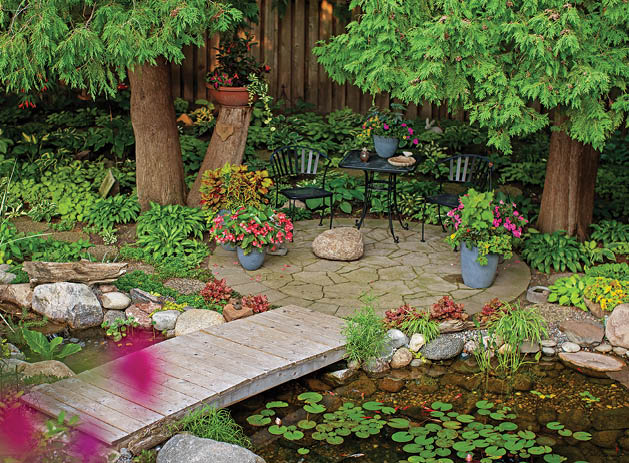
“This garden detail image is fun because we see some great contrasts and pattern. The blades of bright green grass in the bottom left corner mimic the sharpness of the beautiful driftwood. And again, the purple flower petals mimic the curvy wood grains. I also love the contrast of the rock curves with the lines the driftwood and grass create. There is a lot going on in the image, but by keeping the background out of focus with a lower aperture (shot at f2.2) we keep our eye on the area near the driftwood and not focusing on the background detail.”
“I often can be found lying on the ground or balancing in odd yoga poses to get the best angle. With this cascading stream I wanted to portray the height it created in the garden but also keep the water and reflections in the photograph, so I used a lower angle to add separation from the background.
Creating a path for your eye, I again focused at the top of the waterfall so the stream itself would carry your attention down to the cherub statue. The frog statue [at top] is also placed well and gives the photo some balance, from left to right, with two small anchor points.”
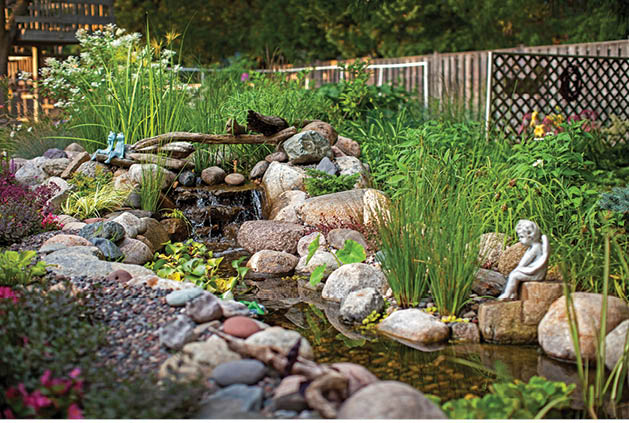
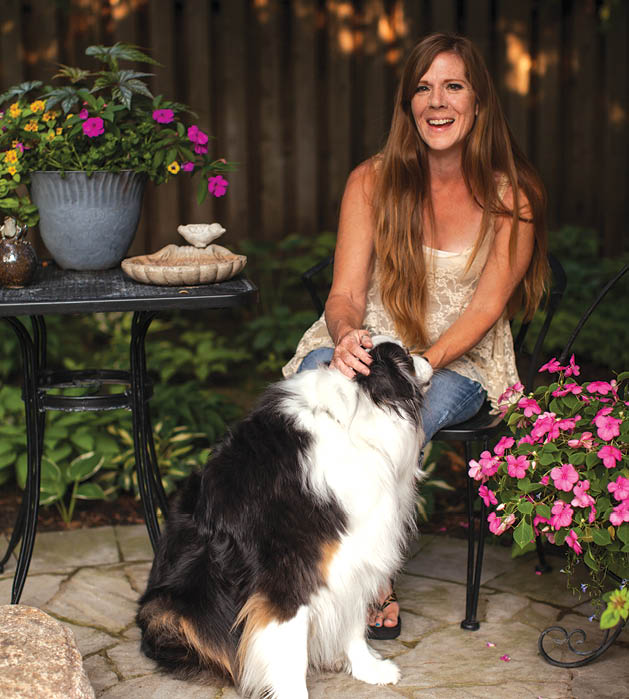
“The evening light hits this coleus beautifully, giving the plant and container depth in the image. It’s best to photograph gardens at dawn or dusk to help keep the light even in your image. The textures and colors really ‘liven up’ this image.”
Tracy Walsh is an award-winning photographer living in Maple Grove. She has a bachelor’s degree in fine art from the University of Wisconsin—Stout. Walsh enjoys capturing gardens, kids, creative portraits and weddings. She was an art director and photographer for Gardening How-To Magazine for nine years before becoming a freelance photographer. Her work has also been featured in Midwest Home, Horticulture Magazine and Northern Gardener, among others. See more of her work on her blog Poser Design.







